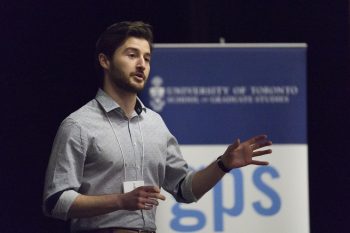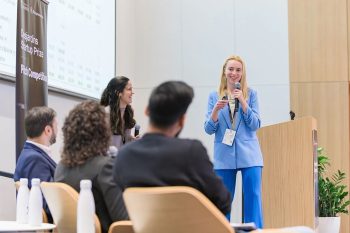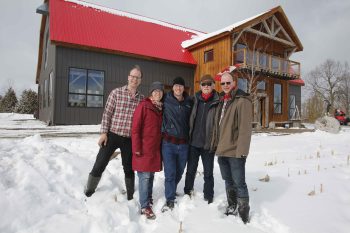Professor Daeho Kim (CivMin) joined the Department of Civil & Mineral Engineering as an Assistant Professor on July 1, 2021.
As an introduction to the U of T Engineering community, CivMin’s Phill Snel asked him to answer a few questions.
Can you tell us a bit about your background?
I originally came from Seoul, South Korea.
My academic journey started from the year 2006 at Yonsei University in South Korea, where I got my bachelor’s and master’s degree in Architectural Engineering.
I went to the University of Michigan in 2016 and started a new academic journey at U of T in CivMin (MSc and PhD), exploring the emerging field of co-robotic construction.
Could you explain the focus of your research?
My research focus is to realize the true value of co-robotic construction. As a researcher, my goal is to lay a solid foundation for human-robot collaboration by establishing safe and cohesive teaming among workers and robots, and reconfiguring existing labor-intensive construction mechanisms.
This video from the U.S. National Science Foundation shows a bricklaying robot named SAM in action.
The construction industry is gradually gearing up to embrace a range of robotic solutions to break through challenges such as low productivity and a shortage of skilled young labourers. Equipment manufacturers have retrofitted their equipment with autonomous kits, and robotics companies are releasing a variety of construction robots at varying degrees of autonomy.
On the research side, we are exploring new forms of robotic solutions, and imagining their successful deployment. Robots can carry out repetitive and laborious tasks quickly, leaving workers to instead focus on supervising the robots and troubleshooting uncertainties. The synergy from the cohesive human-robot collaboration would greatly improve productivity as well as workers’ ergonomics and safety.
However, for the construction industry to truly embrace robotic solutions, we need scalable safety technologies at high fidelity, redesign of workspace and work process, and the development of training programs for human workers who are to co-work with robots.
My research aims to answer the following questions:
- How do we ensure workers’ safety alongside robots of varying autonomy?
- How can we improve workers’ physical, cognitive, and emotional comfort with working alongside robots, thereby having more productive and cohesive team?
- What would be the ideal work environment be for a human-robot crew?
- How can we foster a new workforce specialized in robot collaboration?
During my PhD, I worked mainly on the framework and technology development to ensure workers’ safety alongside robots, leveraging visible, imagery data, computer vision, and deep neural networks. In the future, I intend to explore the rest of the agenda by expanding our knowledge and skillset to a variety of sensing modalities and learning techniques.
Why did you choose U of T?
I believe the value of research can truly shine when it is applied to the real world and addresses what a given sector struggles with. Continued interaction with industry partners, hearing their voices and needs, and validating research at real construction sites are of great importance. Toronto, one of the largest cities in North America and the hub of a wide spectrum of construction projects, will provide me with such opportunities.
I also chose U of T for the opportunities to do interdisciplinary research. To contribute to construction management, I am eager to embrace emerging sensing modalities and advanced data analytics from various domains to bridge the interdisciplinary gap. What better choice would there be than U of T, Canada’s top university, with a rich cohort of academic professionals?
What are you most looking forward to in your new position?
I am looking forward to meeting you all and getting to know more about you! I am a very open-minded and easy-going person. Anyone who knocks on my door will be very welcomed. I will have coffee ready in my office all the time.
As a new professor, what one piece of advice would you give to new students?
Keep challenging yourself and don’t be afraid of failure. Gaining new knowledge, growing your skillsets, and becoming an expert — none of these is straightforward and you may face difficulties. But don’t think of them as failures: think positive. Learning and progress are there in failure, sometimes even more so than in success.
What do you hope to accomplish in your new position/during your time at U of T Engineering?
Apart from research and teaching, I would like to change how people think about civil engineering.
Construction, an industry that provides buildings and infrastructure essential to our daily lives, is one of the largest and important industries for society. Nevertheless, construction jobs are often considered as low-compensation occupations, and the proportion of young construction professionals and students is sadly declining.
I would like to bring a new paradigm of construction—more automated and digitalized co-robotic construction.
Is there anything fun/unusual/unexpected about yourself that you’d like to share?
I have a special experience with teaching not only in academia, but in the military. I trained 3,600 soldiers when I served military service in South Korea as a drill sergeant for two years!



